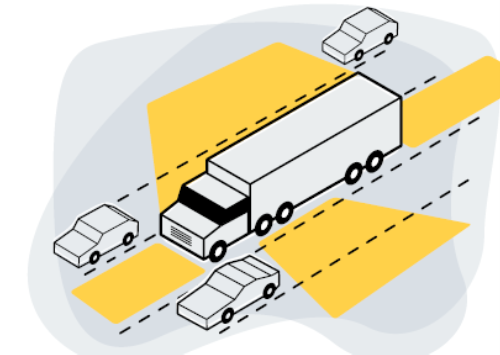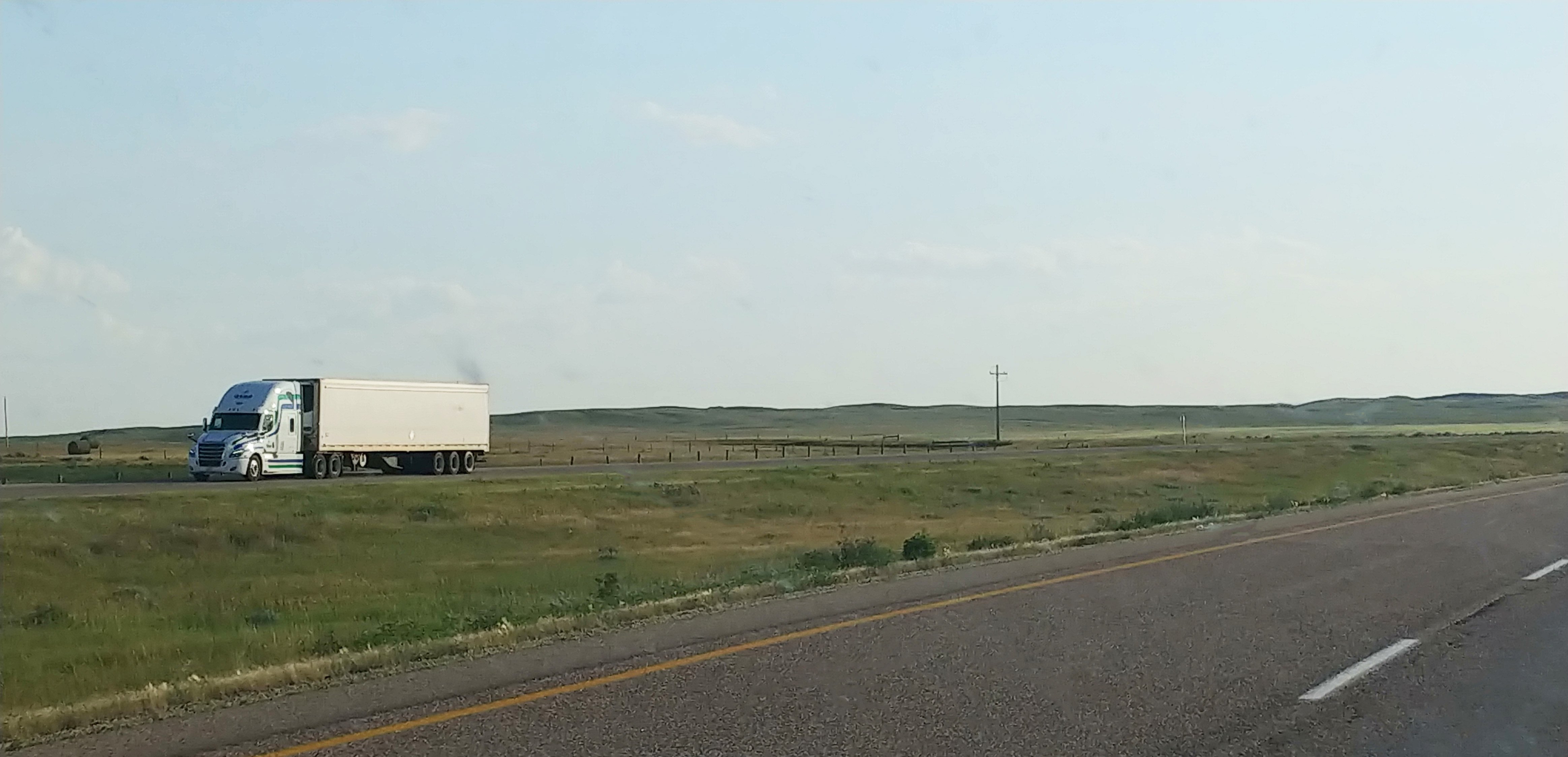For some, driving alongside an oversized vehicle on a double-lane highway can be intimidating.
And, if you need to pass a semi-trailer on a single-lane highway it can be downright scary depending on the amount of traffic. So, how do you safely drive next to a big truck?
Here’s what you should know to help improve your road safety.
The bigger the vehicle, the larger its blind spots
Buses, semi-trailers, and farm machinery have more blind spots than a regular vehicle.
An 18-wheeler, for example, has four blind spots: extending forward about 8 metres from its front bumper; back 60 metres from its rear bumper; from the driver’s door to the trailer’s mid-section on the left; and from the truck’s front to its rear on the right.

The larger the vehicle, the longer the wait time
It takes larger vehicles longer to accelerate, slow down, or stop. So, give them a bit of time and patience if you’re travelling behind them.
In any situation, it’s a good idea to respect a big vehicle’s “right of weight”.
Here are a few tips for sharing the road with bigger trucks or commercial vehicles:
1. The six-second distance rule
When you’re driving behind a large commercial vehicle give yourself a six-second following distance on the highway and four seconds in town.
You can estimate the correct distance by noting when the vehicle in front passes a certain point – a lamp post or road sign – and count down the seconds until you reach that same point.
2. Give trucks room
Give a truck lots of room, and if you decide to pass it, do so quickly while maintaining a safe speed within the posted limit.
Don’t merge or pass in front until you see the truck’s tires in your rear-view mirror. That’ll give the big rig enough stopping distance.
3. Grip the steering wheel
When approaching a large vehicle that’s driving toward you, keep a firm grip on the steering wheel. At highway speed, large trucks create air turbulence, and they can throw up mud, loose gravel or blowing snow.
4. Be mindful at intersections
A bus or larger vehicle often goes a bit to the left to turn right or vice versa.
Don’t get in between them at turns, especially right turns. Even if you see space, do not get in there – they need that room to maneuver.
5. Remember the blind side
If you’re on a multi-lane roadway, it’s safest to pass another vehicle on its left – the driver’s blind spot is larger on the right.
There’s a reason driving instructors call the left side of any vehicle its “view side”, while the right side is known as the “blind side.”
6. Be prepared to move over or slow down
If a large vehicle is merging ahead, you should move over a lane to allow it to drive smoothly into your vacated space. If the lane alongside isn’t open, slow down or speed up to make sure there’s enough room.
The larger the vehicle, the greater the challenge driving near it. But with some understanding about how big trucks operate, the more comfortable you’ll be sharing the road with them.
Drive safe. For more driver safety tips visit caask.ca/safety. Our Roadside Assistance team is here to help put safety first.

